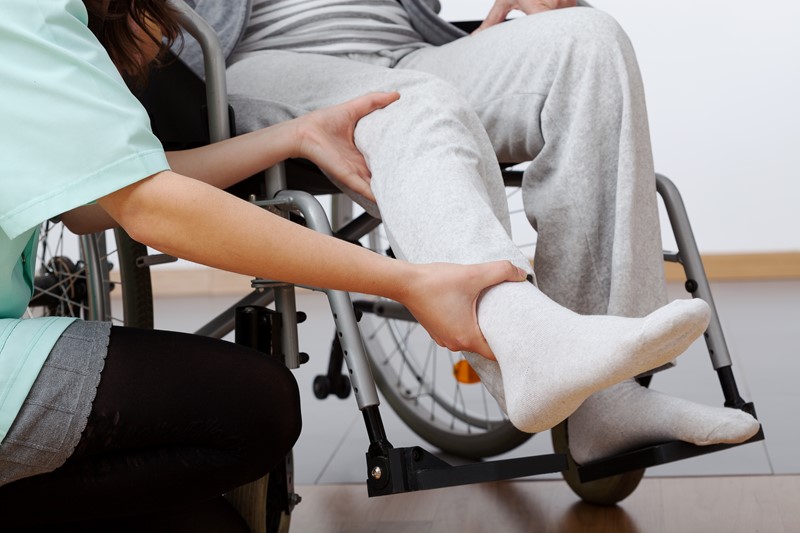A health system designed for Acute Disease
Globally, most health systems were designed in the post-World War II era as the “sick care” system. For the most part, the system was not designed to help prevent the onset of disease but instead to diagnose and treat illness.
Acute diseases tend to be short, diagnosed easily and treated with a cure. The reactive approach to acute diseases works well and the health system is well equipped in this approach of reactive care.
But why does this reactive approach need to change?
The reactive approach to healthcare is both expensive, and, to some degree, ineffective in meeting the needs of today’s population, from the healthiest individual to the complex chronically ill.
The burden of chronic disease
The World Health Organization estimates that 50% of the global burden of disease is chronic illness. Chronic diseases are long-lasting, having compounding and sustained effects on the social, physical, psychological and economic levels of the individual and broader society.
Chronic illnesses are mostly characterised by complex causes, many risk factors, long latency periods and result in functional impairment or disability. Most chronic illnesses do not fix themselves and are generally not cured completely.
According to a study done by World Economic Forum the global economic impact of the five leading chronic diseases – cancer, diabetes, mental illness, heart disease, and respiratory disease could reach US$47 trillion over the next 20 years.
Is our current health system equipped for the future?
A paradigm shift for modern medicine
Today, our world of healthcare is quickly transforming from a reactive to a proactive system.
Having a better understanding of the underlying mechanisms and causes of Chronic Diseases as well as technological advancements is actively shaping contemporary medicine.
The American Medical Association states that more than 98,000 annual deaths are preventable. We need to take a more active role in our health and make healthy lifestyle changes that support the wellness of our whole being.
The healthcare landscape is experiencing a tremendous paradigm shift to a new framework defined by the four Ps (P4) of medicine, a term coined by biologist Leroy Hood.
The premise of P4 medicine is that in years to come medical practice will be transformed by biotechnology into a more targeted approach that manages a person’s overall health as opposed to simply managing a patient’s disease. Rather than the medicine of the past that worked on population averages, the medicine of the future will focus on the individual.
The P4 approach to medicine
P4 is defined into four categories: Predictive Medicine, Preventative Medicine, Personalised Medicine and Participatory Medicine.
These categories are set to modify the existing healthcare paradigm, elevate healthcare competency, reduce costs and help move our healthcare system from reactive to preventive and proactive. The active involvement of patients is necessary to guarantee effective self-management.
Making the influx of information meaningful
The digitisation of medicine is making P4 Medicine a reality today. New technologies are being created to handle, digitise, share and assess individual big datasets.
The application of business intelligence and reporting to the modern dataset that makes up a patient is very powerful. Identifying patterns and revealing insights based on data can help clinicians make more informed decisions about a patient’s care, but also empowers the patient to be actively involved in their health. The patient is not passively receiving care anymore, they are an active participant.
The role of genomics is leading this health transformation. It allows scientists to evaluate an individual’s DNA and make predictions based on diseases the individual is genetically predisposed to.
Modifying behavioural habits like avoiding smoking, maintaining a healthy diet, regular exercise and reducing alcohol consumption can improve health and reduce clinical problems.
Can a health technology solution pave the path to proactive healthcare?
From including non-traditional data types, to enabling population stratification based on risk factors, a technology solution needs to embrace the flexibility to cater to an ever-growing longitudinal patient record.
As the medical history definition expands to include genetic tests and social determinants of health, clinical decision support systems need to be put in place to help the clinician in navigating the amount of information available and making the best decision possible.
Finally, the solution should carefully consider patient engagement. The data needs to be curated and presented in the most appropriate form so that the individual can easily understand the information and can act upon it.
This is an introduction to how health systems are moving towards the 4Ps approach. The next blog in this series will focus on Predictive Medicine.



